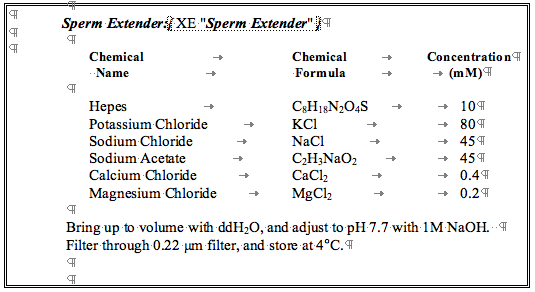(Source: G.E. Corley‑Smith, C.J. Lim, and B.P. Brandhorst from Zebrafish Book 5th Edition)
Overview of technique
For successful in vitro fertilization, zebrafish eggs must normally be fertilized almost immediately after being collected from the female. However, zebrafish eggs can be held in Coho salmon (Oncorhynchus kisutch) ovarian fluid for periods exceeding 1.5 hours with high subsequent fertilization rates. Eggs can be successfully held for periods exceeding 6 hours, although the fertilization rate is compromised. For a general discussion of in vitrofertilization, please see *Embryo Production By In Vitro Fertilization (page 2.14).
...
1. First, remove most of the ovarian fluid from the eggs with a sterile pipette to a clean 0.5 ml microcentrifuge tube. Later when time permits, centrifuge at 5500g for 5 minutes at 4°C, decant supernatant and freeze. Ovarian fluid can be reused several times.
2. Spread 5‑15 μl of sperm extender containing sperm evenly over all the eggs in the Petri dish.
- Immediately add 0.5 ml fish water and swirl very gently to mix.
- After 1 minute, very gently add 28.5°C water to 3/4 fill Petri dish and leave at 28.5°C for 1 hour. To promote gas exchange, make sure there is a space between top of water and Petri dish cover.
5. After 1 hpf, add 0.02% stock solution of methylene blue for a final concentration of 0.3 PPM. This helps to inhibit fungal growth. Make sure eggs do not touch each other, to reduce the spread of fungus that may grow on dead eggs from attacking developing embryos.
6. Place in 28.5°C incubator.
7. After 24 hpf, remove dead embryos and flush out methylene blue.
Sperm Extender:
